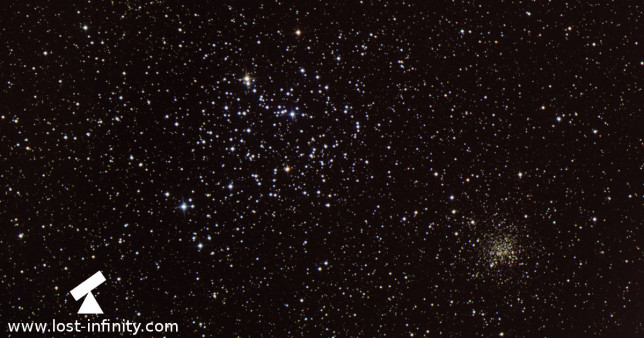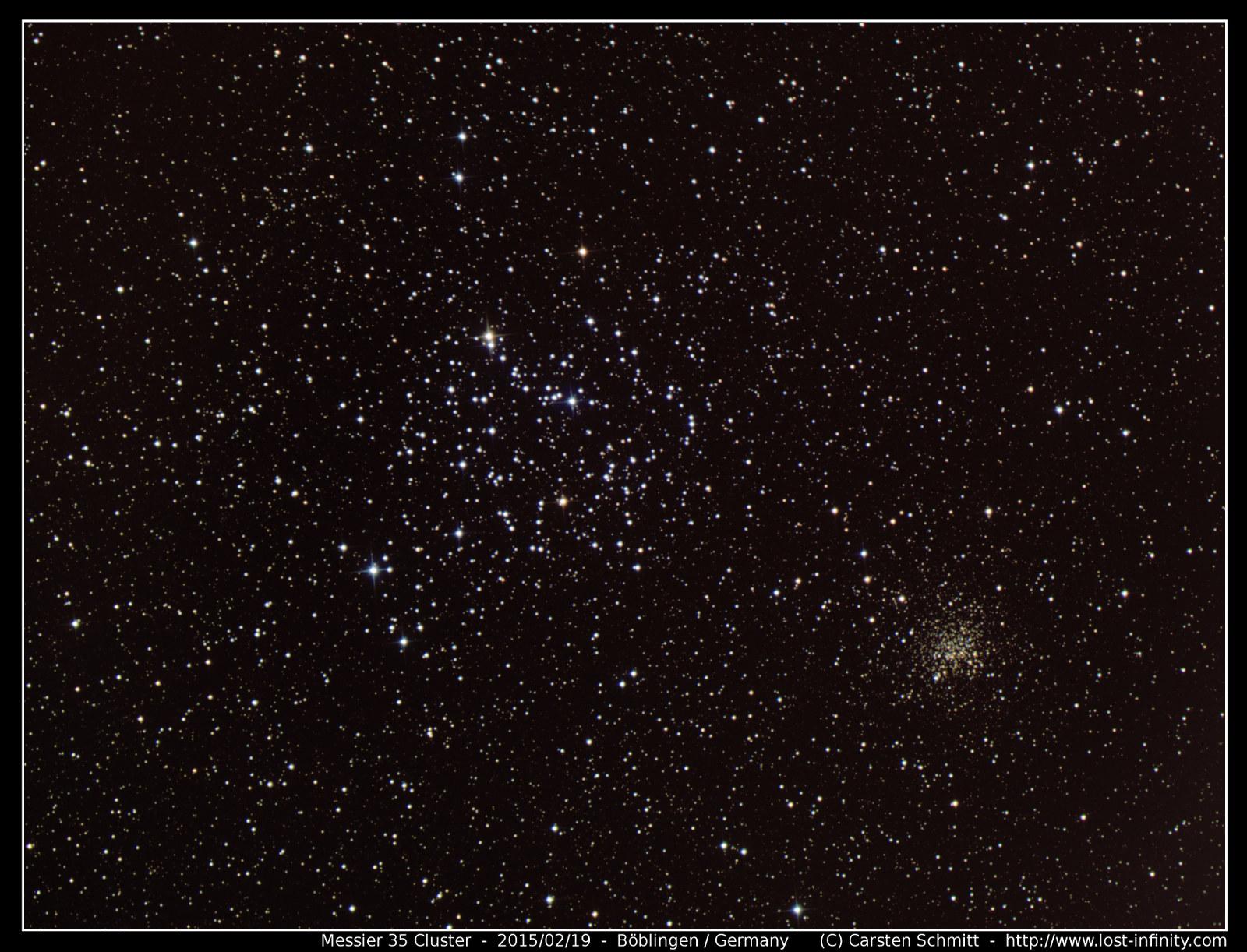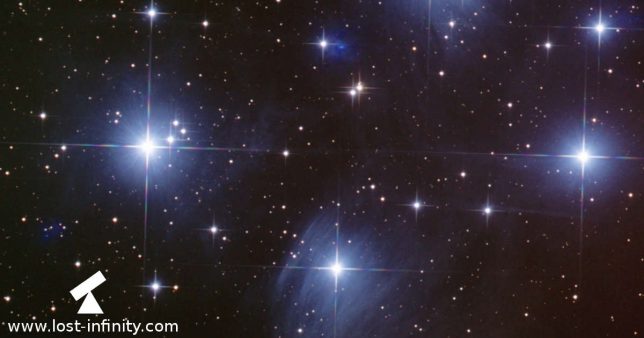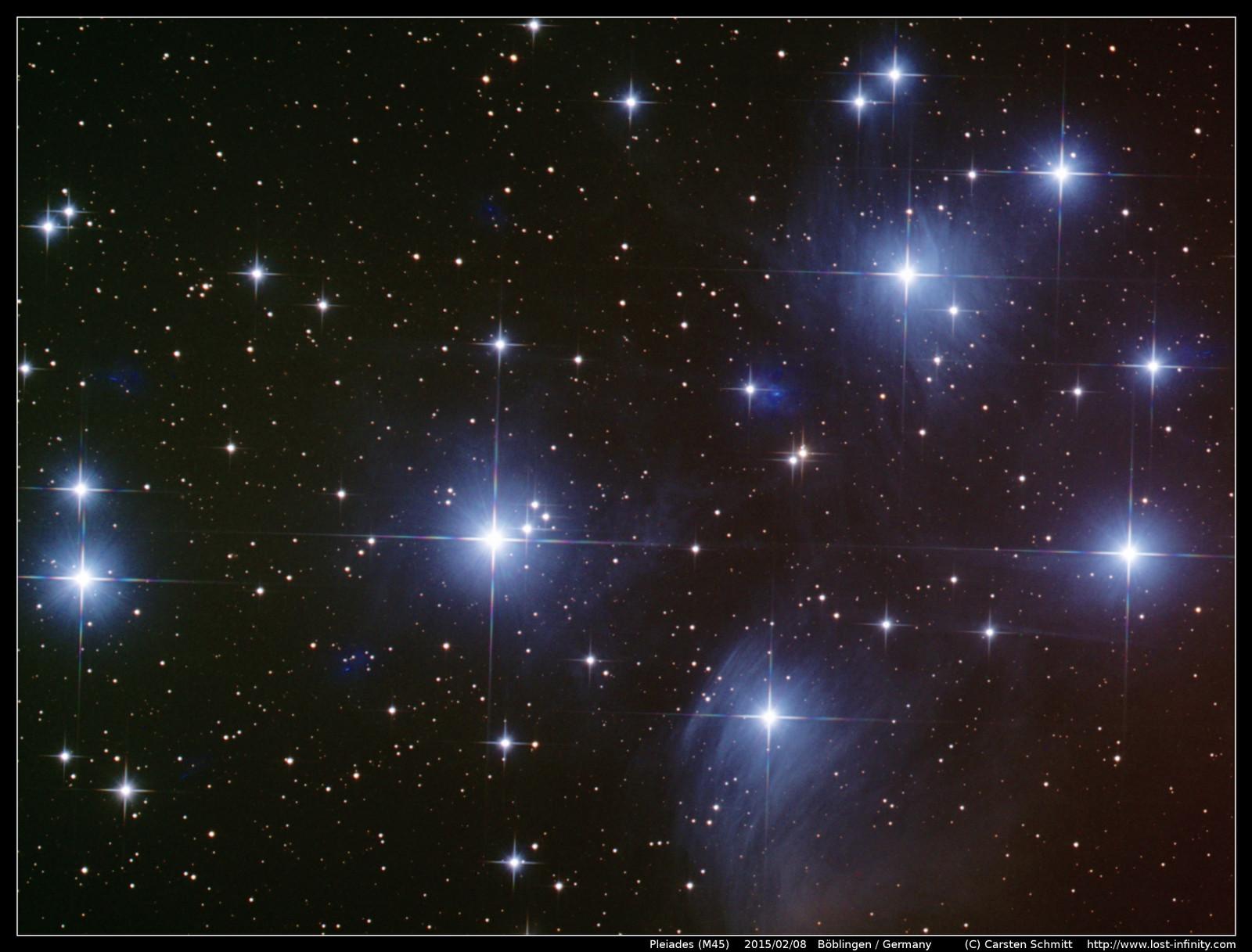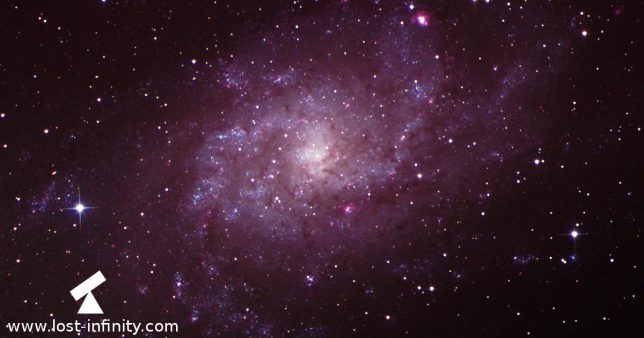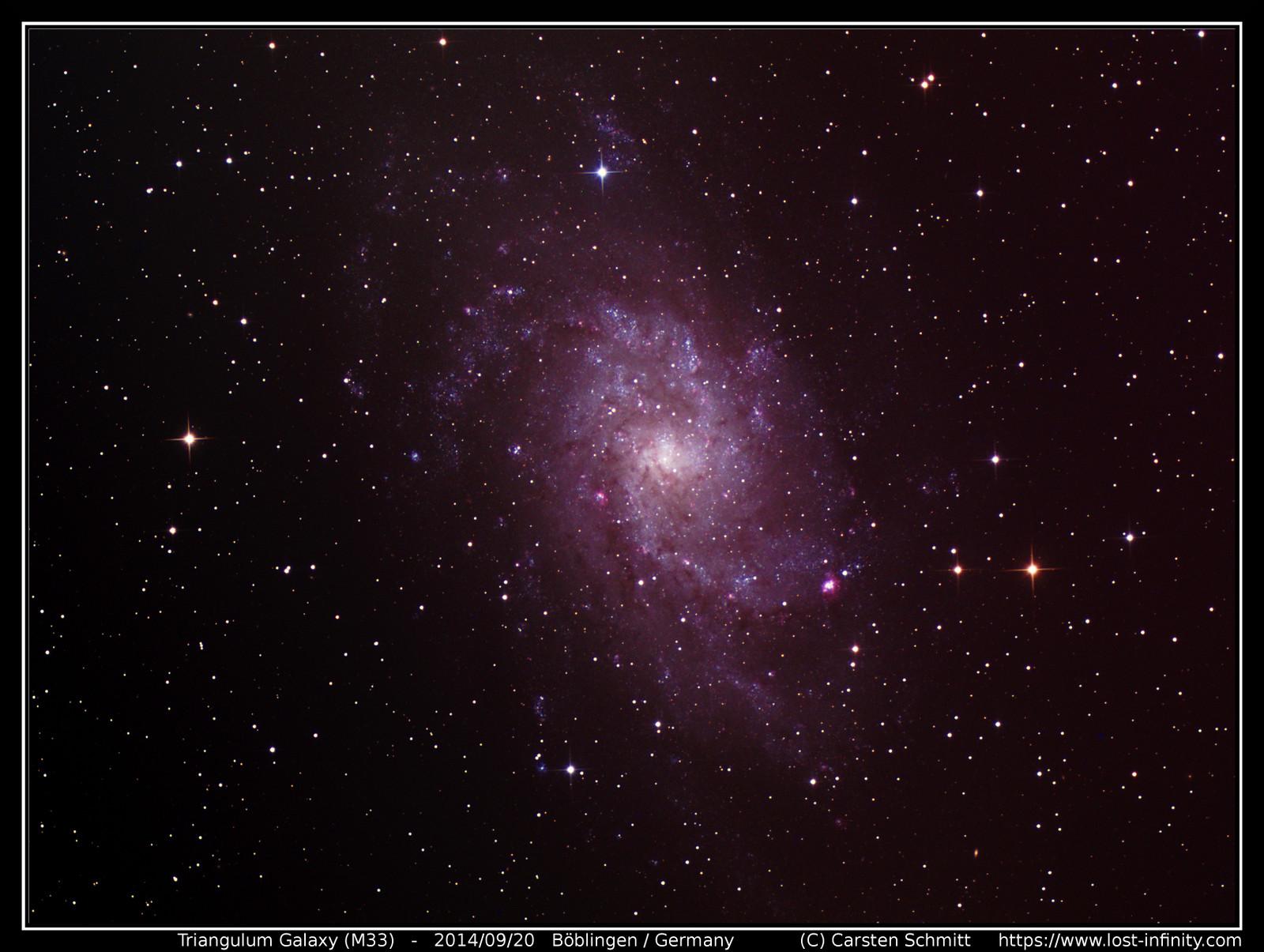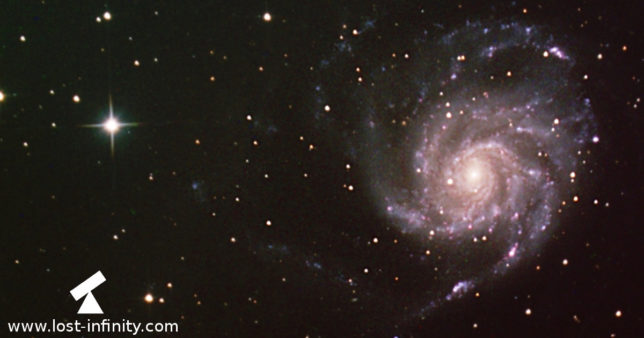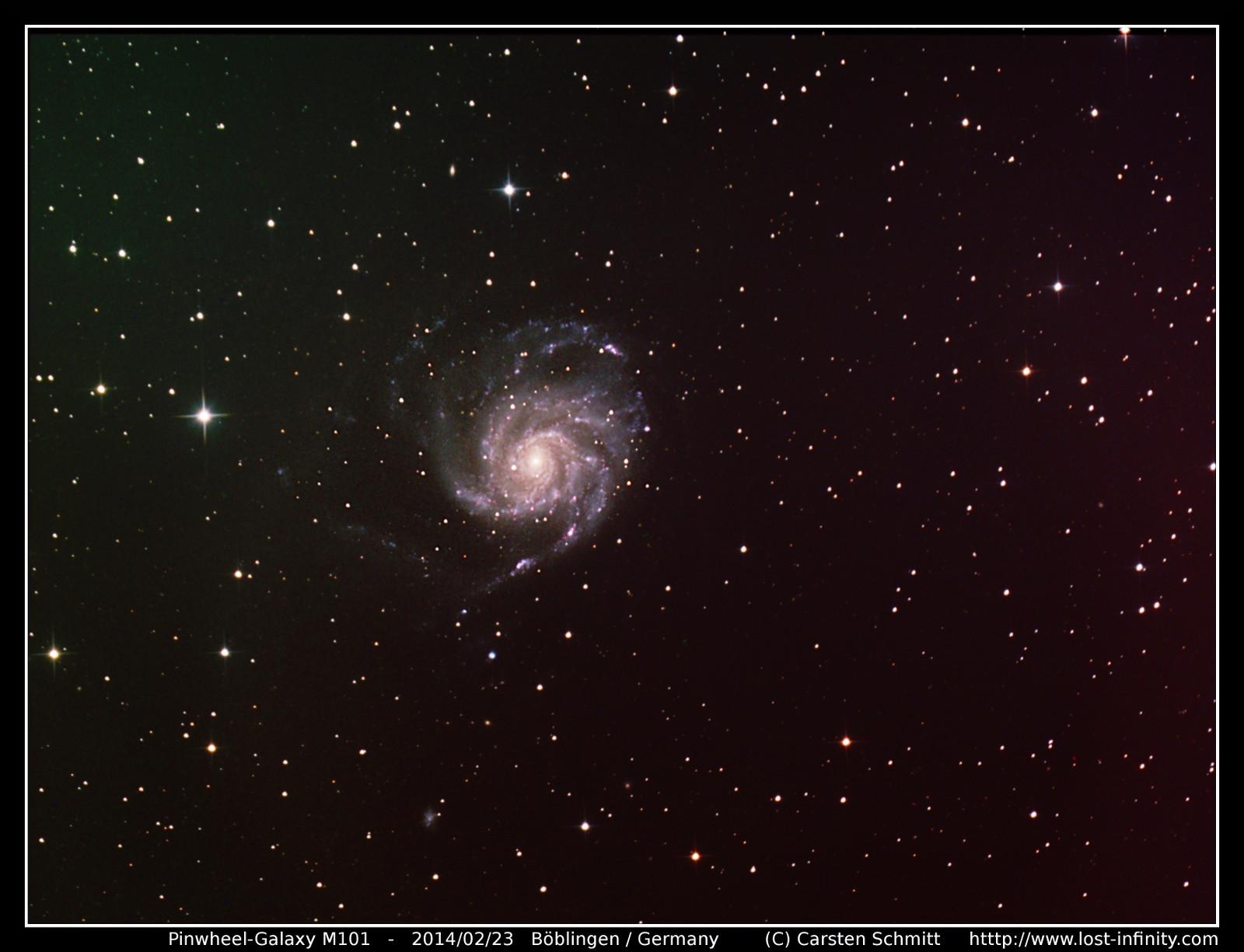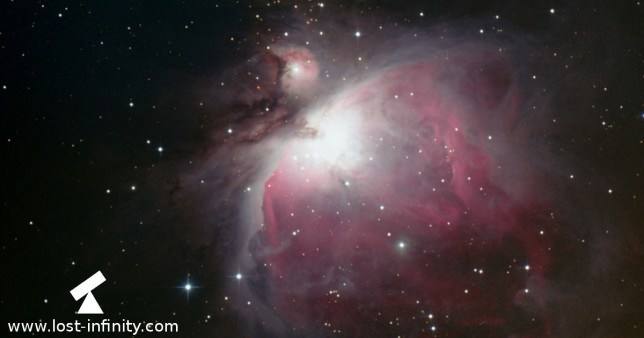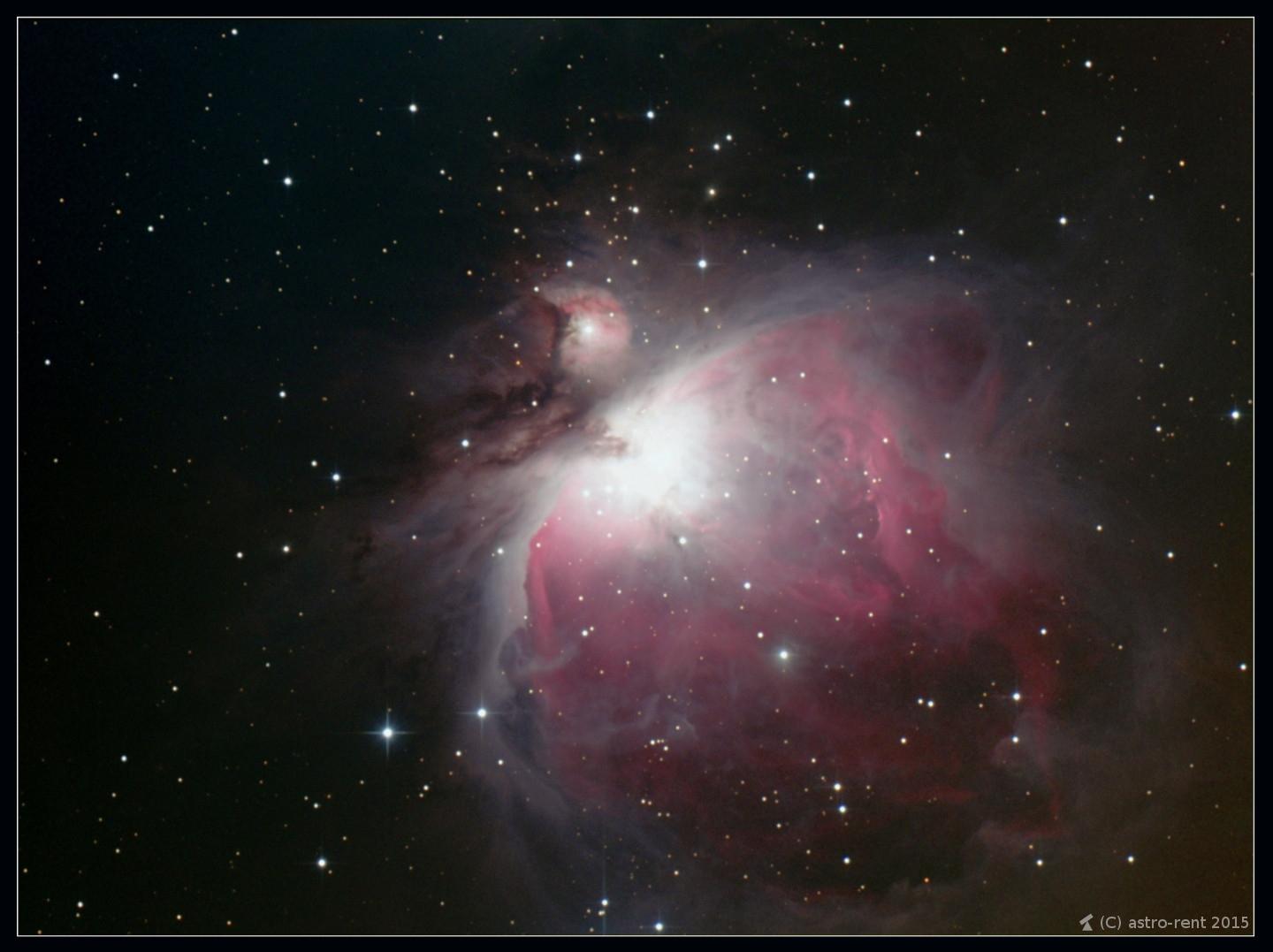Messier 35 or M35, also known as NGC 2168, is an open cluster of stars in the west of Gemini (left part of the image). To the right there is another open cluster named NGC 2158. Even if the two open clusters are “close” they are not related – their distance is about 9000 ly.
The image is also available in full resolution here.
 | Date | 2015/02/19 |
 | Location | Böblingen / Germany |
 | Object | Messier 35 cluster |
 | Camera | Atik383L+ |
 | Guiding | yes, QHY5-II Mono via OAG |
 | Telescope | 8" GSO Newtonian |
 | Barlow lens | none |
 | Mount | EQ6Syntrek |
 | Cooling | -15°C |
 | Luminance | 11x, 600s, bin: 1x1 |
 | Red | 9x, 150s, bin: 2x2 |
 | Green | 9x, 150s, bin: 2x2 |
 | Blue | 9x, 150s, bin: 2x2 |
 | Dark | 5x |
 | Flat | 10x |
 | Total exposure | ~2h57min. |
NGC 2158 is believed to be ~2 billion years old!
Clear skies!
Last updated: June 19, 2022 at 22:20 pm




























